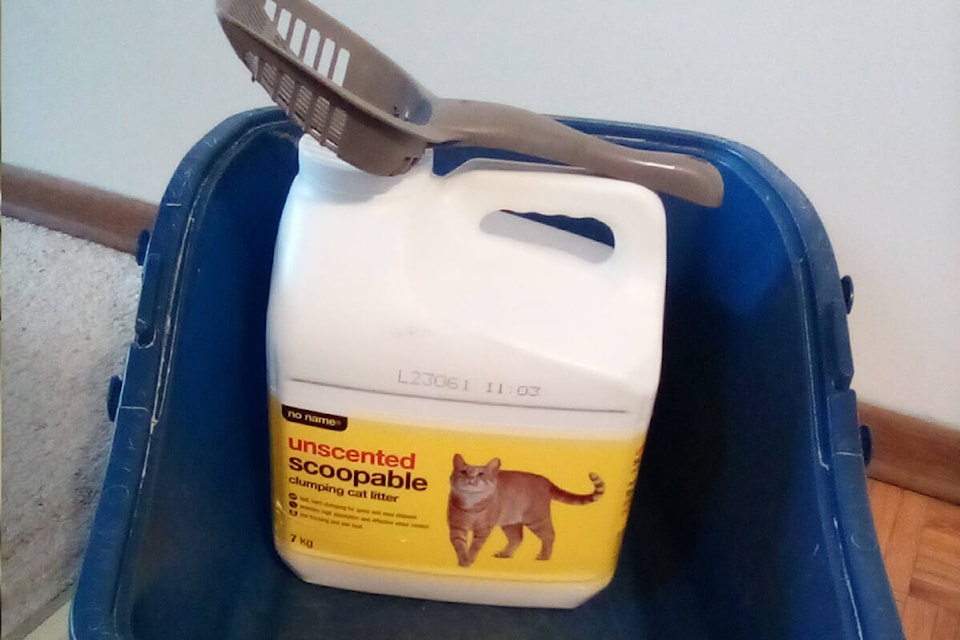Last week I talked about dog poop. This week I thought I should go feline and talk about the mysterious and fascinating world of cats and kitty litter.
Take a dog for a walk and it will try to pee at every available spot to mark its territory. They will poop right in the middle of a trail or walkway because that is what they do. Cats are much more civilized and use their litter boxes. Some cats will even follow you into the bathroom, because I think they secretly want to flush toilets of their own and I am sure someday someone will invent one for them.
If you go to the store to buy kitty litter, most of the ones currently available are clay based. People have been mining and using clay for thousands of years, mostly for making pottery. If people found a good bed or seam of clay, they would start using it. This seemed to happen with cultures and civilizations around the world.
Think of it this way: there is gravel, sand, silt and clay. They are classified by grain size. Some clays have interesting properties that humans have clued into. The clay used in kitty litter is called bentonite — or absorbent aluminum phyllosilicate. Way back in the earth’s history, there was a lot more volcanism going on than today and volcanoes pump out all sorts of gases and ash. Bentonite was originally volcanic ash that sat in beds for millions of years and changed its chemistry a little with age.
Because bentonite is absorbent, it was used for medicinal applications. Removing toxins from the body, treating oily skin or poison ivy, as an aid to weight loss, relieving constipation, treating diarrhea and diaper rash. Then, in 1947, a fellow in the USA started to use it as kitty litter which soon became popular because not only does it absorb cat pee but chemically it stops it from getting smellier over time.
It became so popular that companies started to strip mine it. It was mined in the southern United States: Mississippi, Georgia, and Florida. Then, in 1984, clumping bentonite was found in the west — particularly Wyoming, which mines 90 per cent of the kitty litter in North America and half the kitty litter mined in the world. In a recent survey, they estimated that there are 75 million cats in the USA and they mine over a million tons of kitty litter every year.
This ancient volcanic ash is mined and shipped around the world where cats use it. Then it gets thrown away into dumps and sewage lagoons. It is a great example of how humans mine certain minerals and then spread them all over the place. In Yellowknife, I have no idea how many cats there are, but there are lots and their used kitty litter ends up in our dump or at the Fiddler Lake Sewage Lagoon. We are creating our very own volcanic ash deposit.
So, if you have a cat and buy clay-based kitty litter, you are in effect supporting mining, and probably strip mining in Wyoming, although there are a few places in Canada that do mine it. This all started in 1947 and took off in 1984, so it is a fairly recent phenomenon.
However, when you stop to think about it, it is not all that ecologically friendly. The good news is that clay-based kitty litter may soon be replaced by new types made from things that are biodegradable, like plant-based kitty litter. That would be quite an improvement.
So, I bet most people didn’t realize that looking at kitty litter would be a lesson in geology, mineralogy, consumer trends and history. If the wonderful world of cat owners does switch to a biodegradable form of kitty litter, in my opinion, that would be a good thing and would certainly cut down on our carbon footprint.
Also, the cats might enjoy the change because clay can be a little messy particularly if it clumps between your toes.
It’s only a matter of time before someone invents flush toilets for cats.
